People, passion, perseverance: the Canadian Forest Service, from humble beginnings to a world-leading science hub.
August 2024
It all started back in 1899 with just one person and a budget of $1,000. That’s how the Canadian Forest Service (CFS) got its humble beginnings as the Forestry Dominion of Canada. Fast forward 125 years, and it’s grown into a world-leading, science-driven government sector with impressive research centres, two research forests and hundreds of passionate people.
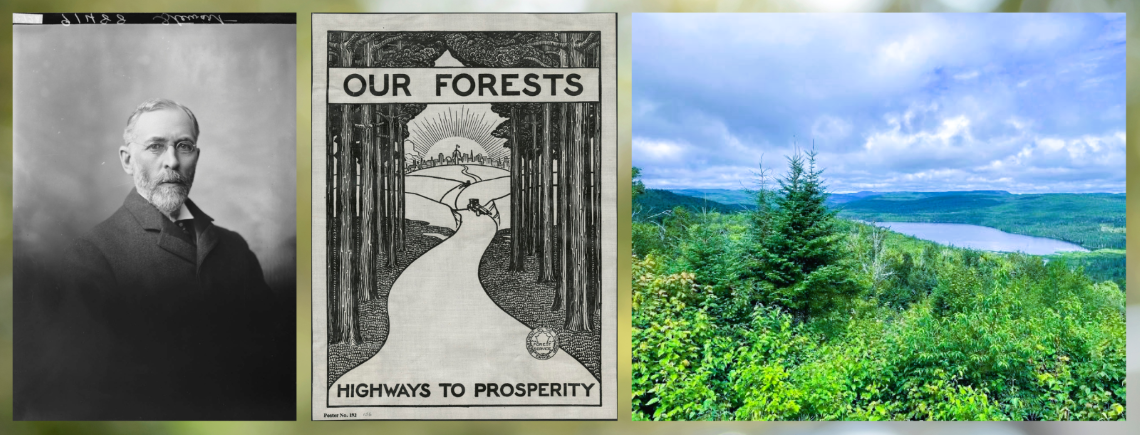
Elihu Stewart, the first superintendent of the Forestry Dominion of Canada at the turn of the century. An early poster for the department and a recent photo of a mixed forest in Quebec. (photos: (left) Library and Archives Canada/ Topley Studio fonds/a091094, (right) Martin Girardin, CFS researcher).
That was then.... this is now
Besides providing guidance on sustainable forest management, CFS scientists study some of the most pressing issues of our times: from assessing wildfires to managing pests, studying climate change to calculating carbon management. People have always been at the centre of it all — whether they’re digging in the dirt, peering through microscopes, analyzing satellite data or travelling by horseback, boat or plane to get to their study locations.
Scroll through this photo gallery spanning over a century — it’s like a time capsule. And meet some of the inspiring individuals who’ve shaped the CFS into the world-leading forest research hub it is today.
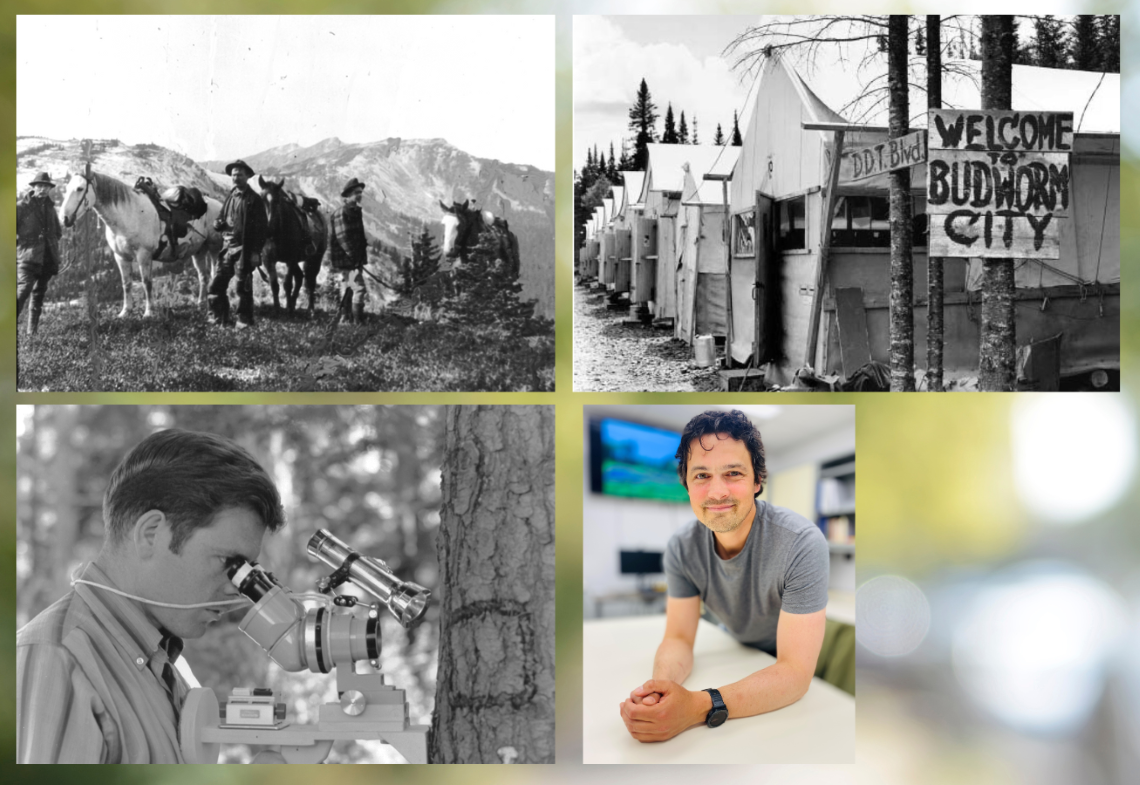
Battle of the bugs:
Insects are the most diverse group of organisms in Canada. Our forests contain thousands of species. Only a small number kill trees, but an infestation can be catastrophic. At the turn of the century in British Columbia the insect control crew had to rely on packhorses to reach remote areas. By 1952, the fight against the spruce budworm was intensifying in Atlantic Canada. And in 1968, back on the West Coast, Bob Betts was just starting his 30-plus-year career at CFS by using cutting-edge technology for the era — a field adaptor for stereo microscopes — to study balsam woolly adelgid.
Today, the challenge from pests persists, and so does the dedication of CFS scientists who continue to dig up dirt on many destructive pests. This year, scientist Christopher Edge is doing field research at the Acadia Research Forest. He’s studying two new insecticides to control the hemlock woolly adelgid, a pest that’s destroying hemlock trees across Nova Scotia.
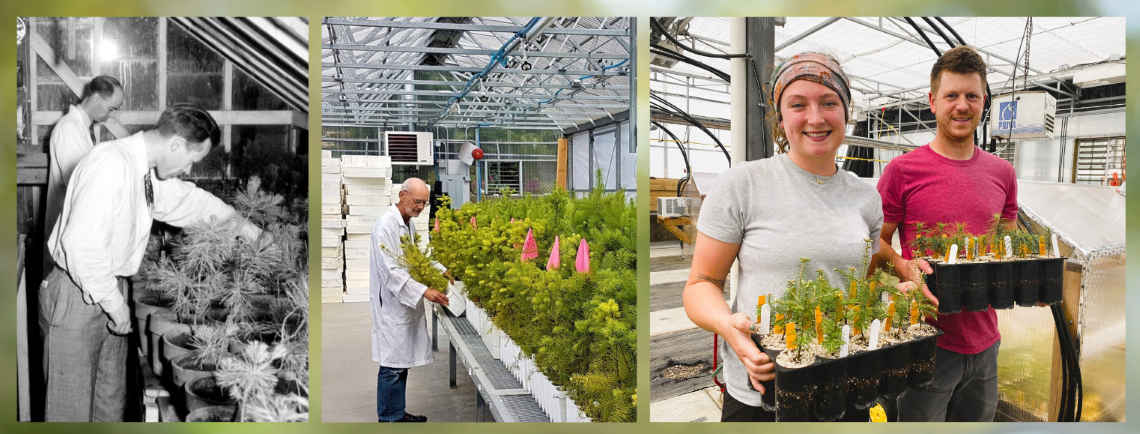
Cultivating foundation: Greenhouse research at the heart of CFS science
In 1951, the same year “I Love Lucy” debuted on network television, two researchers sporting white shirts and ties nurtured Pinus monticola in pots — a testament to greenhouse research of the time. Today, foundational work continues to shape CFS science for future generations. In 2019, scientist Mike Cruickshank from the Pacific Forestry Centre cared for more than 2,000 Douglas-fir seedlings, ensuring their survival during COVID-19 lockdowns. Currently, Mackenzie Good, a MSc forestry student from the University of New Brunswick is working with forest research biologist Rob Vaughn at the Atlantic Forestry Centre. They’re growing seedlings of several coniferous tree species in climate controlled mini greenhouses to measure the effects of climate change on forests.
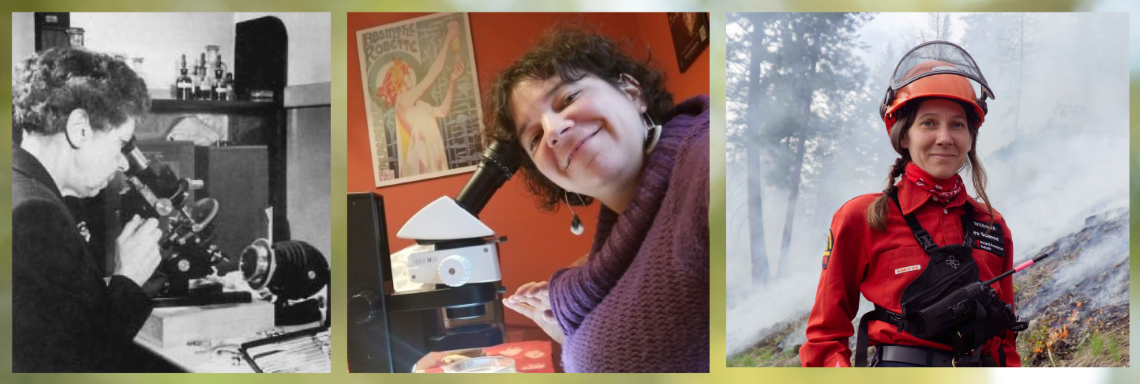
Trailblazers from lab to field and beyond...
In the early 20th century, Clara Fritz was a trailblazer as the first ever female timber pathologist. She enjoyed a successful career and retired as chief of timber pathology at the Ottawa forest products laboratories in 1954. Clara set an impressive example for her time and now generations of women with a passion for science call CFS home, including Véronique Martel and Ellen Whitman. Véronique leads research into budworm parasitoids while Ellen is a leading wildfire research scientist often contacted by international media and other organizations for her authoritative research.
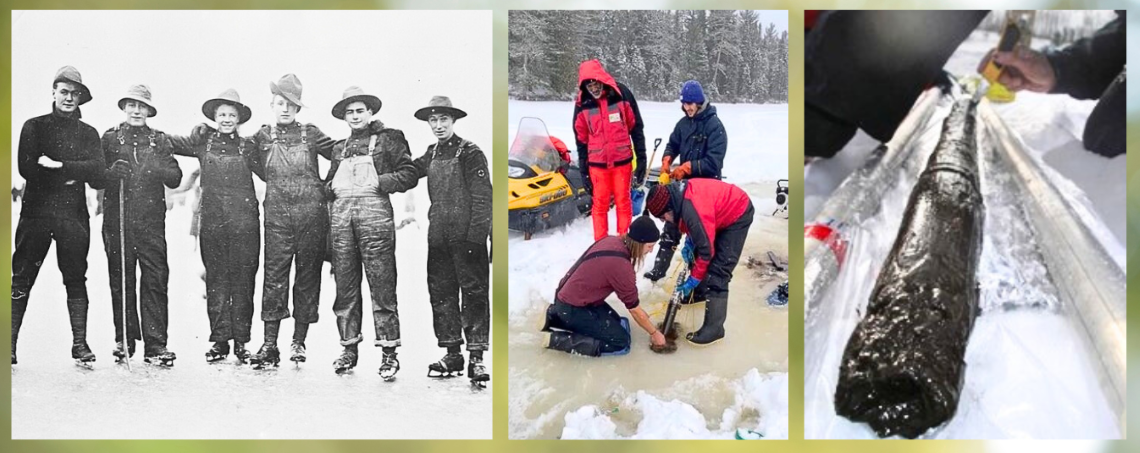
Archival photograph, Library and Archives Canada/Ministry of Overseas Military Forces of Canada/ a004972
More to ice than meets the eye:
In this undated photograph, forestry officers pause for a skate, reflecting different times (and fashions). Today, our scientists are more likely to be wearing cold weather technical gear and drilling through the ice than skating on it. Recently, Martin Girardin and a team from the Laurentian Forestry Centre drilled to the deepest points of six lakes in Lake of the Woods, Opémican Park, Mauricie Park and more recently along the northern region of Caniapiscau to collect sediment cores. The goal? To gain insights into the intricate connections among climate change, human impact and wildfire activity going back 12,000 years.
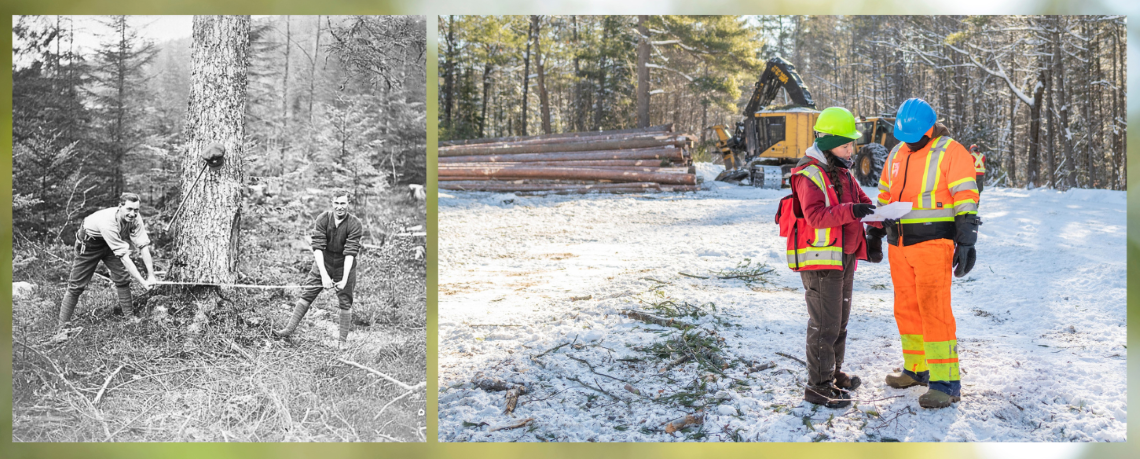
Archival photograph: Library and Archives Canada/ Ministry of the Overseas Military Forces of Canada fonds/a004003
No one said it would be easy:
Researchers still need to knock down trees for their studies, but that’s where the similarities between these two scenes end. In the 1919 photo on the left, there are few, if any, safety precautions in place. In contrast, Melissa Vekeman and Kyle Harbin wear loads of safety gear as they prepare to excavate a patch at the Petawawa Research Forest with the help of heavy equipment and a plan of action. Yet despite having the latest tools, no one would say it is easy work.
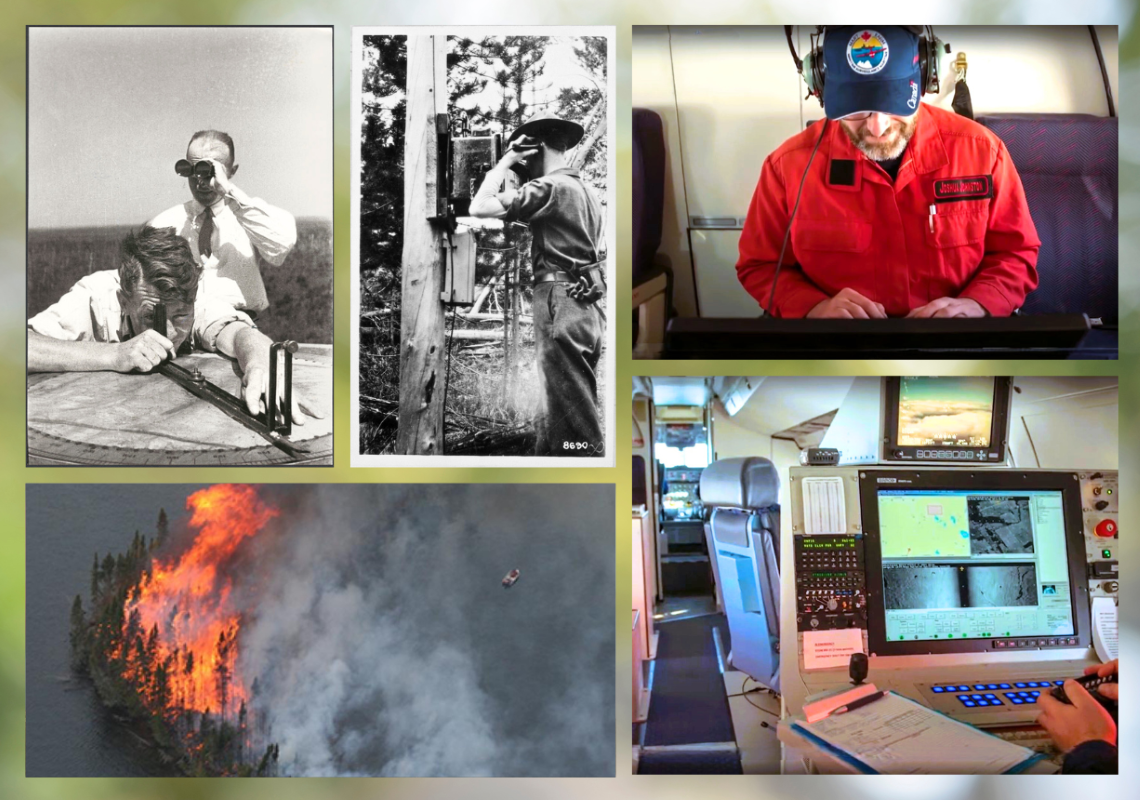
Forest Fire Observers c/ Library and Archives Canada/ Felix H. Man collection/e11297598
Eyes in the sky:
In the ‘20s and ‘30s wildfire observers had basic tools and landline emergency phones to do their job. Today, scientists use planes, satellites and advanced monitoring devices to get a clearer picture of what’s happening on the ground. And a team from CFS is taking things to another level. Research scientist Joshua Johnson is the principal investigator of the WildFireSat mission, a collaborative project with the Canadian Space Agency. The goal? Ensuring Canada is the first country in the world to use specialized purpose-built satellites to monitor wildfires daily.
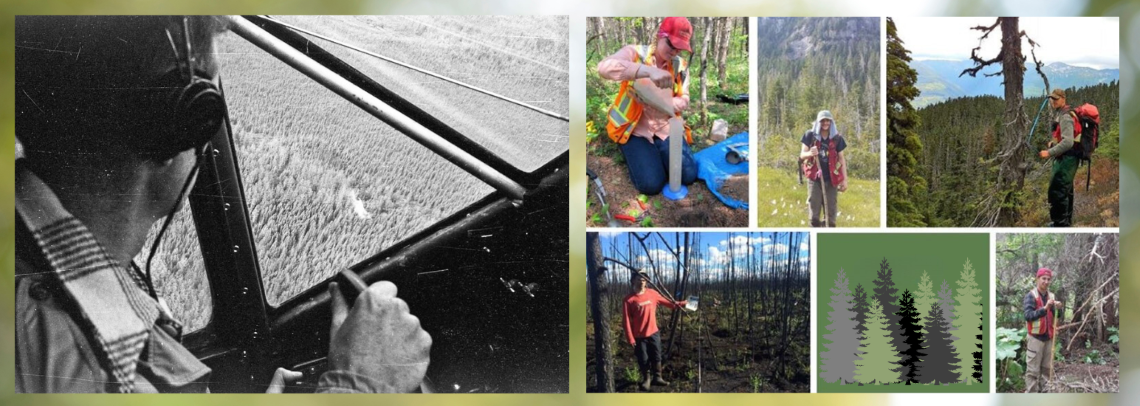
Taking stock of Canada’s forests
One dramatic achievement in CFS history was when Hector Elmer (H.E.) Seely discovered how to conduct forest surveys by identifying tree species and calculating timber volumes from aerial photos. And by 1952 the CFS was not only monitoring, but surveying and registering Canada’s forests. Our scientists continue to be pioneers in the use of leading-edge technologies such as aerial and terrestrial LiDAR, high-resolution digital imagery and statistical modelling capability. But even with all that technology, researchers taking stock for the National Forest Inventory still collect data from permanent ground plots.

Archival photograph: Library and Archives Canada/ Department of Employment and Immigration fonds/e01105565
Counting tree rings and other tales
In 125 years, CFS researchers have evolved from simply counting tree rings to uncovering the fascinating stories they tell. When logging manager G. Welburn and forest engineer Roy West were counting tree rings on this enormous Douglas-fir, they weren’t looking for a story, they were just looking at numbers. More recently, Tony Trofymow from the Pacific Forestry Centre took on an incredible project to document the stories found within a massive 460-year-old Douglas-fir disk. Focusing on the tree’s exact location, Tony incorporated forest ecology, settler timelines, and Indigenous knowledge from three different First Nations. His team produced graphs of tree growth, temperature and carbon dioxide that span 520 years before, at the start of, and during the accelerating increase in atmospheric CO2 and climate change in the 20th century.
What’s next?
Clearly, a lot happens in 125 years! Imagine what the next 125 years will bring. Keep learning with us, whether by observing a tree near your home, taking a walk in the woods or reading more about CFS research below.